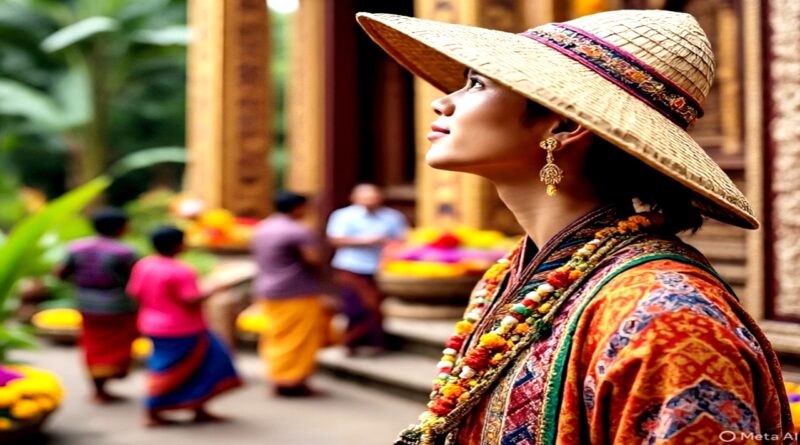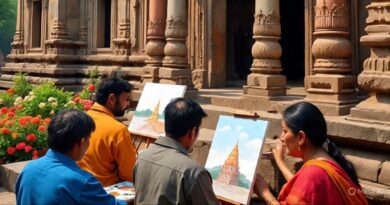Exploring the World’s Richest Art Traditions
Art has always been the heartbeat of human civilization. From the earliest cave drawings to modern digital masterpieces, the world’s richest art traditions tell stories of who we are, where we’ve been, and what we value. These artistic expressions are not just visual pleasures they carry history, emotion, and cultural depth that define entire societies. Let’s embark on a journey to explore how diverse cultures across the world have developed some of the most remarkable and enduring art traditions.
The World’s Richest Art Traditions in Asia.
Asia is home to some of the world’s richest art traditions, deeply influenced by religion, philosophy, and heritage.
In China, ancient ink painting and calligraphy stand as symbols of discipline and balance. Each brushstroke carries meaning representing not just form but spirit. Japan’s art traditions, from origami to woodblock prints, emphasize simplicity and harmony with nature.
India’s artistic history is vibrant and spiritual. From the intricate carvings of Khajuraho temples to the colorful Madhubani and Warli paintings, every piece tells a tale of gods, myths, and daily life. Similarly, Islamic art from Persia to Pakistan is renowned for its geometric precision, Arabic calligraphy, and symmetrical beauty a visual reflection of divine perfection.
European Influence: The World’s Richest Art Traditions in the West.
Europe has shaped global art for centuries, giving birth to movements that transformed creativity forever.
During the Renaissance, artists like Leonardo da Vinci, Michelangelo, and Raphael set new standards in realism and perspective. This era revived classical knowledge and blended it with innovation creating the world’s richest art traditions rooted in humanism and intellectual curiosity.
Later, Europe witnessed dramatic art revolutions: Baroque art brought emotion and grandeur; Impressionism captured fleeting light and color; Cubism and Surrealism challenged perception itself. Each style reflected its time, leaving an unending legacy that continues to inspire artists around the globe.
African Roots of the World’s Richest Art Traditions.
Africa’s artistic history is as old as humanity itself. The continent’s art is woven deeply into community life serving spiritual, cultural, and practical purposes.
Traditional African sculptures, masks, and beadwork are among the world’s richest art traditions, often created not just for decoration but for storytelling and ritual. The Ashanti goldwork of Ghana, the vibrant textiles of Nigeria, and the symbolic masks of Mali each represent a spiritual connection between humans, ancestors, and nature.
These creations influenced modern Western artists as well Pablo Picasso and Henri Matisse drew inspiration from African motifs, proving that the continent’s art is both ancient and endlessly relevant.
The World’s Richest Art Traditions of the Americas.
The Americas hold a fusion of indigenous and colonial artistic traditions.
Before European colonization, civilizations like the Maya, Aztec, and Inca built grand temples, carved stone monuments, and painted vibrant murals depicting gods, rituals, and astronomy. These indigenous works form the world’s richest art traditions, preserved through symbols and spiritual storytelling.
After the colonial era, new art forms emerged combining European techniques with local identities. Latin American muralists such as Diego Rivera and Frida Kahlo used their art to tell stories of struggle, identity, and revolution. In North America, Native American pottery, weaving, and sand art remain vital expressions of cultural continuity and spiritual respect for nature.
The World’s Richest Art Traditions in the Middle East.
The Middle East is the birthplace of civilizations and, naturally, of the world’s richest art traditions.
From Mesopotamian carvings to Persian miniature paintings, the region’s art blends faith, mathematics, and poetry. Islamic architecture like the domes of Istanbul or the intricate tilework of Iran shows how geometry becomes divine art. Arabic calligraphy transforms simple letters into sacred beauty, symbolizing the unity between word and spirit.
Modern Middle Eastern artists are now merging traditional motifs with contemporary issues proving that these ancient traditions still breathe and evolve in today’s creative world.
Oceania and Indigenous Expressions Among the World’s Richest Art Traditions.
Oceania, including Australia, New Zealand, and the Pacific Islands, holds art traditions that are ancient and spiritual. Aboriginal dot paintings from Australia are among the world’s richest art traditions, depicting “Dreamtime” stories the spiritual origins of the land and people.
In New Zealand, Māori carvings and tattoos (ta moko) are more than decoration; they are living records of ancestry, honor, and identity. Across the Pacific Islands, tapa cloth art and intricate weaving connect people to the ocean and to each other, preserving wisdom passed down for centuries.
Modern Reflections on the World’s Richest Art Traditions.
Today’s artists continue to honor the world’s richest art traditions while blending them with modern tools and technology. Digital art, street murals, and performance art are all influenced by the legacies of older civilizations.
Museums and online platforms make global art more accessible than ever, allowing younger generations to learn, remix, and reinvent traditional expressions in new ways. From AI-generated art inspired by Renaissance masters to Instagram pages reviving lost tribal patterns, the conversation between past and present continues to grow.
Why Preserving the World’s Richest Art Traditions Matters.
Art is not just decoration it is memory. The world’s richest art traditions preserve the wisdom, beliefs, and creativity of humanity. Losing them means losing our connection to the past. Supporting artisans, protecting heritage sites, and encouraging education in traditional crafts ensure that these art forms survive and evolve.
When we appreciate diverse art traditions, we not only enjoy beauty but also build bridges between cultures. In a divided world, art reminds us that creativity is a universal language.
Conclusion: Celebrating the World’s Richest Art Traditions.
Exploring the world’s richest art traditions is like walking through time. Every sculpture, painting, and pattern tells us something about human resilience, imagination, and identity. From Asia’s spiritual strokes to Africa’s symbolic sculptures and Europe’s revolutionary movements, art continues to inspire and unite us.
The more we learn and share about these traditions, the more we understand ourselves and each other. Art doesn’t just belong to museums it lives within people, cultures, and stories that deserve to be told again and again.



